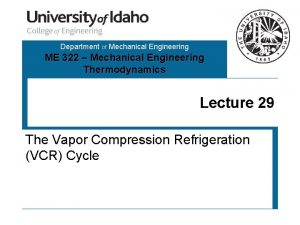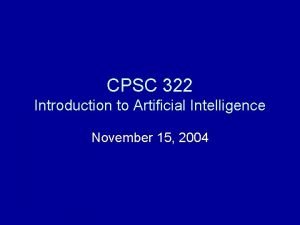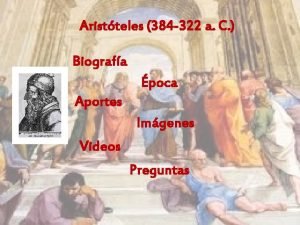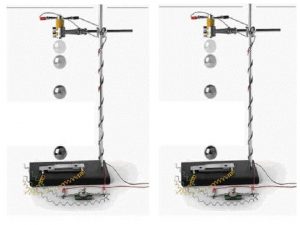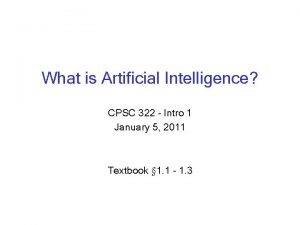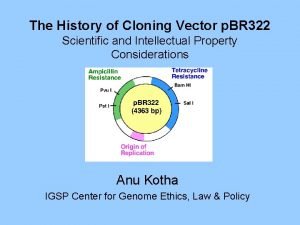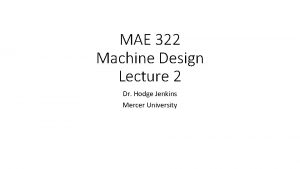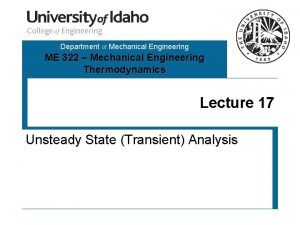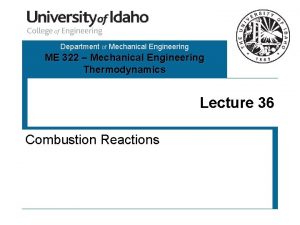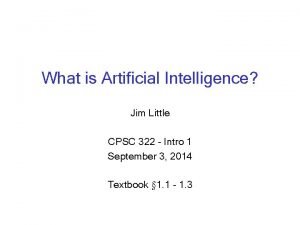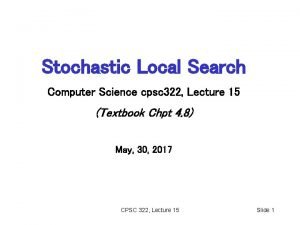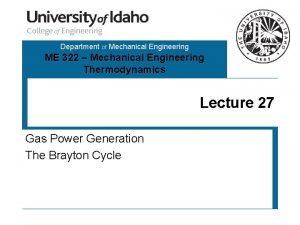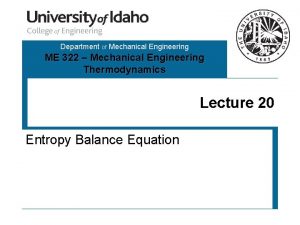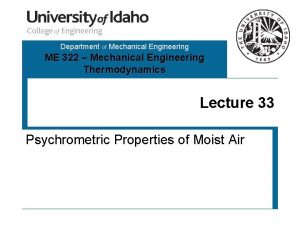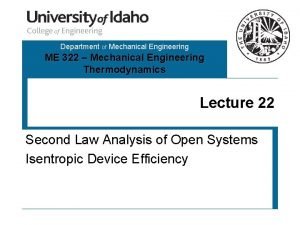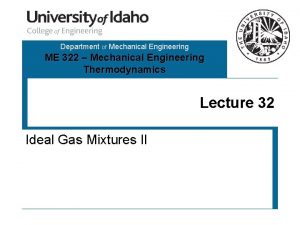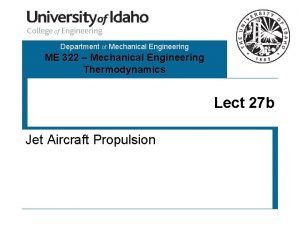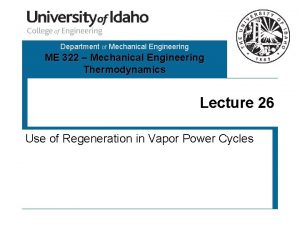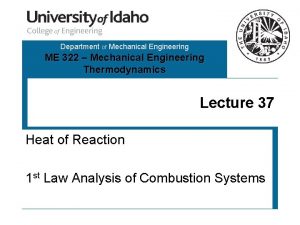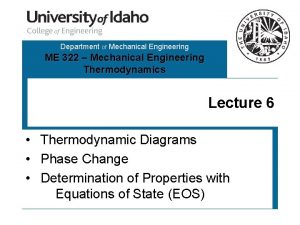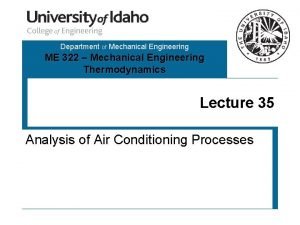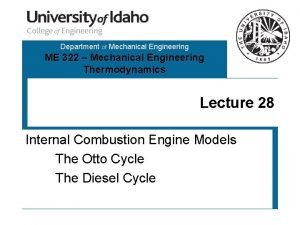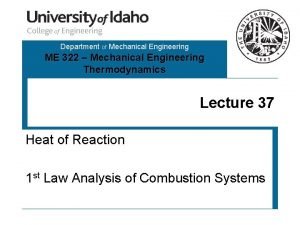Department of Mechanical Engineering ME 322 Mechanical Engineering
















- Slides: 16

Department of Mechanical Engineering ME 322 – Mechanical Engineering Thermodynamics Lecture 31 Ideal Gas Mixtures

Mixtures in Engineering Applications • Natural gas – Methane, propane, butane, nitrogen, hydrogen, carbon dioxide, and others • Refrigerants – Zeotropes - True mixture behavior • Example: R 407 c - R 32/125/134 a (23/25/52 by mass) – Azeotropes - Mixtures that behave as a pure fluid • Example: R 507 A - R 125/143 a (50/50 by mass) • Air and water vapor – Psychrometric analysis • Air conditioning applications 2

Pure Fluid vs. Mixture Behavior R 22: a pure fluid; a halogenated methane molecule (chlorodiflouromethane) 3 R 407 C: a mixture of R 32, R 125, and R 134 a

Thermodynamic Properties of Mixtures • Real mixture behavior – Real mixture model • Very complex to describe analytically – Topic for an advanced course • EES can calculate real-properties of common mixtures! • Low-pressure, moderate density – Ideal solution model • Gases are treated as real fluids with idealized mixing – Topic for an advanced course • Low-pressure, low density – Ideal gas mixing model • Gases are treated as ideal gases with idealized mixing – ME 322!! 4

Ideal Gas Mixture Models Even though the ideal gas mixing model is simplified, it turns out to be fairly accurate for two important processes that mechanical engineers deal with. . . • Air Conditioning – Water vapor + air mixtures • Conditions are suitable for ideal gas property estimation – even for water vapor! • Combustion Analysis – Products of combustion are often at high temperatures and low pressure The rest of ME 322 deals with these two processes 5

An Example – Gas Turbines Air into the combustion chamber Products of combustion leaving the combustion chamber Combustion products can contain CO 2, H 2 O, O 2, N 2, CO, NO 2, and others! In order to get a better estimate of the performance of the gas turbine, we need to be able to determine the properties of the mixture passing through the turbine 6

Nomenclature In this section, there a number of subscripts that you need to keep straight. These are: m: i: k: This is describing the ‘mixture’ This is describing the ‘individual’ species Assigns a number to each unique species Additionally, B or b is a placeholder for any Extensive (B) or Intensive (b) property. • B could be U (internal energy) • B could be H (enthalpy) • b could be h (specific enthalpy) • b could be v (specific volume) 7

Properties of Ideal Gas Mixtures Consider any property, B (extensive) or b (intensive). For a mixture, Mass Basis* mass fraction *Other common words: weight basis or gravimetric basis 8 Molar Basis mole fraction** **Note: The text uses ci for mole fractions

Mass/Mole Fraction Conversion In some instances, a conversion between mass fraction and mole fraction is needed. The mass of a substance is related to the number of moles through the molecular mass, Mi , Calculating the mass fraction from known mole fraction: 9

Mass/Mole Fraction Conversion Calculating the mole fraction fro known mass fraction: Summary of findings. . . 10

Example Given: A mixture of ideal gases has the following molar composition; Argon (y. Ar = 0. 20), helium (y. He = 0. 54), and the balance is carbon monoxide. Find: (a) mole fraction of carbon monoxide (b) the molecular mass of the mixture (c) the gravimetric (mass) composition of the mixture Note: The molecular mass of the mixture can be found by, 11

Example The mole fractions of the argon and helium are given. Therefore, the mole fraction of carbon monoxide can be found, Now, the molecular mass of the mixture can be found, 12

Example The mass fraction composition of the mixture can be found by, Therefore, 13

Example Comparison of mole fractions and mass fractions for this mixture. . . Component Ar He CO y w 0. 20 0. 54 0. 26 0. 458 0. 124 0. 418 1. 00 It is always a good idea to check if the calculated fractions sum up to one! 14

Ideal Gas Mixture Properties We have previously seen that, Consider the internal energy and enthalpy of an ideal gas mixture. The components of the mixture exist at the same temperature as the mixture. Therefore, according to the expressions above, 15

Another Example Given: A mixture of ideal gases is contained in a closed, rigid container that has a volume of 2 ft 3. The mixture is an equimolar binary mixture of methane and ethane. The mixture is initially at 15 psia, 20°F. Heat is now transferred to the mixture pressure and temperature become 60 psia, 300°F. Find: The amount of heat transferred in this process. 16

